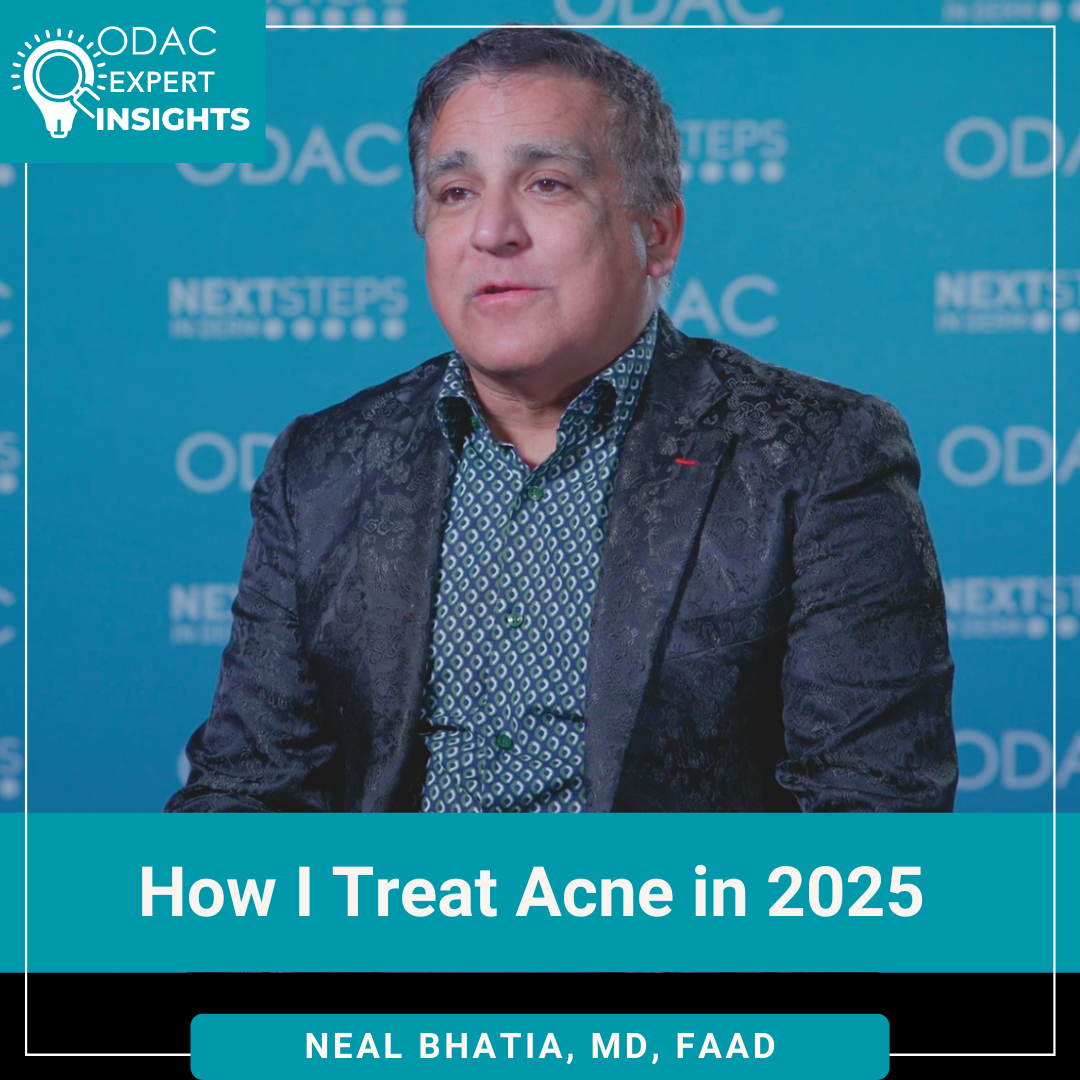A resurgence in the use of isotretinoin is one of the developments changing the way Dr. Neal Bhatia treats acne. Next Steps in Derm, in partnership with the ODAC Dermatology Conference, interviewed Dr. Bhatia, a dermatologist in San Diego. Watch as Dr. Bhatia shares some new developments in the management of patients on isotretinoin. Hear the benefits of a newly marketed triple combination cream. Listen as Dr. Bhatia dispels myths on clascoterone’s mechanisms of action. Find out how prescription drug coverage may influence the use of devices and lasers to treat acne. Plus hear Dr. Bhatia’s key points to address in acne patient education.
Further Reading
If you want to read more about treating acne, check out the following articles published in the Journal of Drugs in Dermatology:
Real-World Cases of Clascoterone Topical Treatment for Acne and Related Disorders
ABSTRACT
Acne vulgaris affects approximately 80% of young adults and adolescents in the world. Acne presents as comedones, pustules, papules, and nodules on the face, chest, shoulders, or back. It can lead to a significant decrease in quality of life with a high risk of associated depression and anxiety. Hyperstimulation of sebaceous glands by androgens play a pivotal role in acne pathogenesis. Clascoterone 1% cream is a first-in-class topical androgen receptor inhibitor approved for treatment of acne in patients 12 years and older. In the following real-world cases, expert dermatologists demonstrate use of clascoterone cream as monotherapy or in combination with other agents to treat acne in a variety of patients. Experts found that twice-daily use led to best overall results with patients. Real-world cases serve as invaluable guides for patients and dermatologists to help form personalized, targeted acne regimens.
ABSTRACT
Background: Topical clindamycin phosphate 1.2%/adapalene 0.15%/benzoyl peroxide 3.1% (CAB) gel is the only fixed-dose triple-combination approved for acne (indicated in patients 12 years and older). As topical acne treatment in pediatric patients may be complicated by tolerability and/or a perceived lack of efficacy, post hoc analyses were used to investigate efficacy/safety of CAB in children and adolescents.
Methods: Data were pooled from 2 phase 3, double-blind, 12-week studies (NCT04214639; NCT04214652). Participants aged 9 years and older with moderate-to-severe acne were randomized (2:1) to once-daily CAB or vehicle gel. Endpoints included treatment success (at least 2-grade reduction from baseline in Evaluator’s Global Severity Score and clear/almost clear skin) and least-squares mean percent change from baseline in inflammatory/noninflammatory lesions. Treatment-emergent adverse events (TEAEs) and cutaneous safety/tolerability were evaluated. Post hoc analyses were conducted in adolescents aged 12 to 17 years (CAB, n=123; vehicle, n=50) with descriptive data shown for children aged 10 to 11 (CAB, n=3; vehicle, n=2).
Results: At week 12, 51.5% of CAB-treated adolescents achieved treatment success vs 24.9% with vehicle (P<0.01). CAB also provided inflammatory/noninflammatory lesion reductions of 78.3%/73.7% vs 50.5%/42.9% with vehicle (P<0.001, both). Most TEAEs were of mild-to-moderate severity, and <2.5% of participants discontinued due to adverse events. Only the 3 children treated with CAB achieved treatment success, with lesion reductions ranging from 76% to 100%. One CAB-treated child experienced TEAEs and none discontinued.
Conclusions: In 2 pooled phase 3 studies, once-daily CAB gel was well tolerated and efficacious in pediatric participants with acne, with over half achieving treatment success at week 12.
Did you enjoy this video interview? Find more here.

